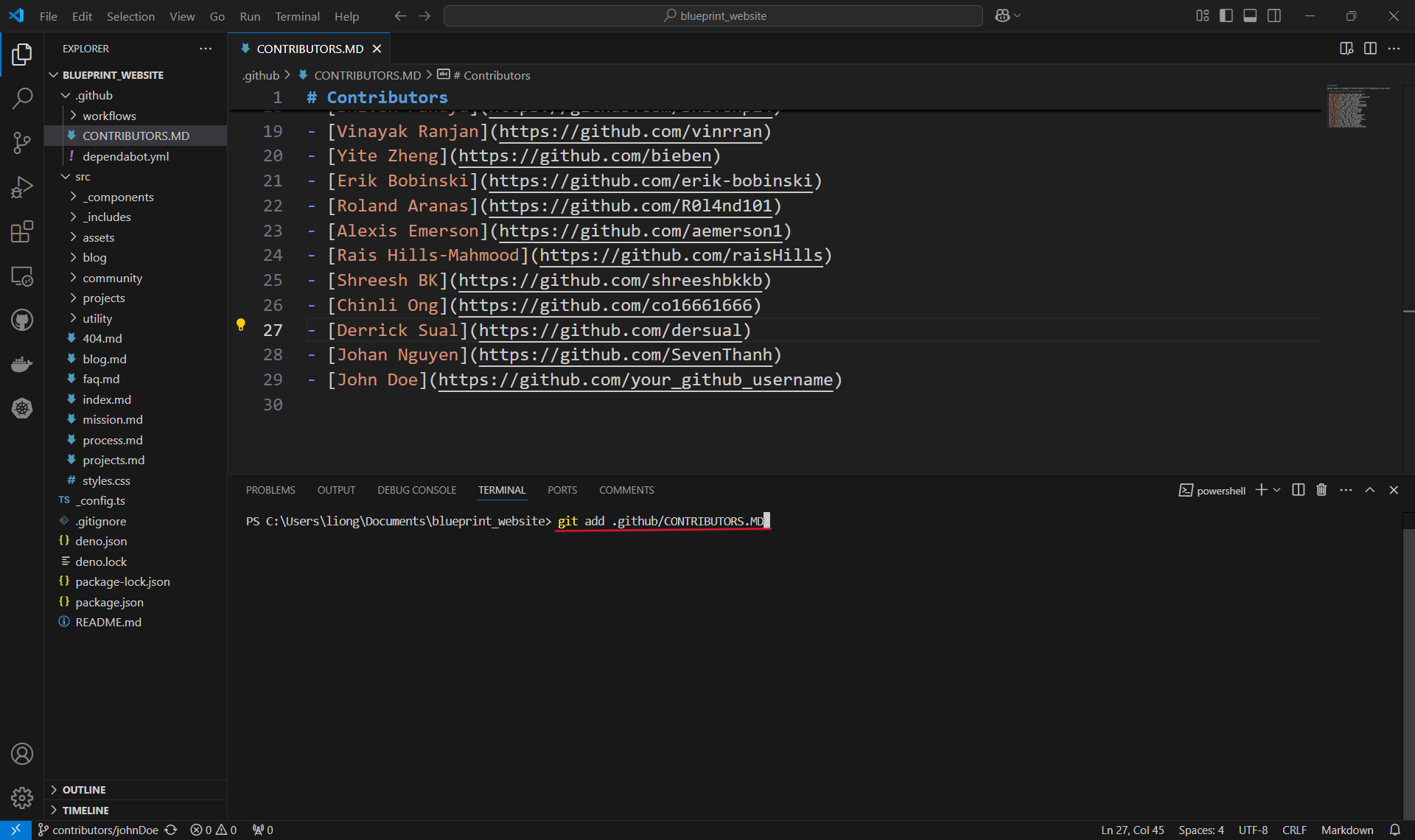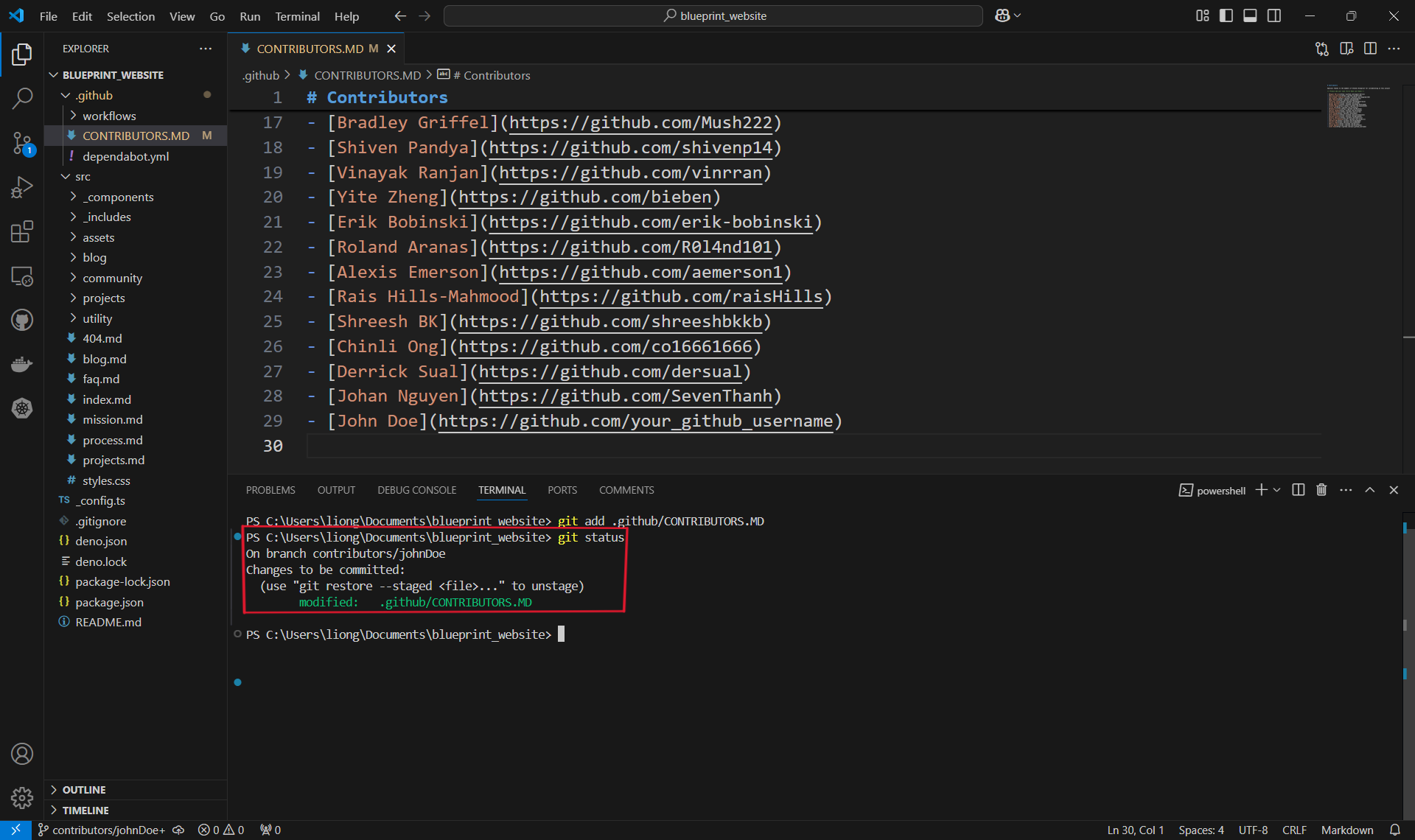Onboarding for Tech Team
Onboarding
How does the Tech Team work?
Git/Github
Making Your First Contribution!
This will be instructions on how to make your first contribution, with the example of adding John Doe to the list of contributors.
-
Cloning the repository.
- Open a new terminal and run the git clone command. This should create a new folder on your computer with the name of the repository.
- Cloning the repository creates a local copy of all the code that you can edit on your computer. This only needs to be run once and from here, you can keep editing this local copy and updating it when needed.

-
Creating a new branch.
- Open the folder of the local repository and run the git checkout command. When making a branch, it is good to pick a short, descriptive name. In our case, we are adding a contributor, so we'll name it contributors/johnDoe.
- Creating a new branch makes a new version of the code that is isolated from the main code. This means changes can be made without affecting the main code (in case something goes terribly, disastrously wrong).

-
Making the change!
-
Adding a file to a commit.
- Once the change is made, use the git add [<FILE_PATH>] command to include the change on the next commit. Commits can be thought of as checkpoints; more on that later.
- You can use git add multiple times to add as many files as you need.
- In this case, we made changes to the CONTRIBUTORS.MD file in the .github folder, so our filepath is .github/CONTRIBUTORS.MD
-
Checking changes to be committed.
-
Committing changes.
- With our changes made and staged, we can create a commit which is basically a checkpoint for our code. We can revert to this point if we make mistakes or need to look at the version of the code at this point in time.
- It is also good practice to include a commit message by using the "-m" flag to describe what changes were made. For us, we will just say that we are adding a new contributor.
- We can commit as often as we want, or when we feel it is necessary before making big changes.
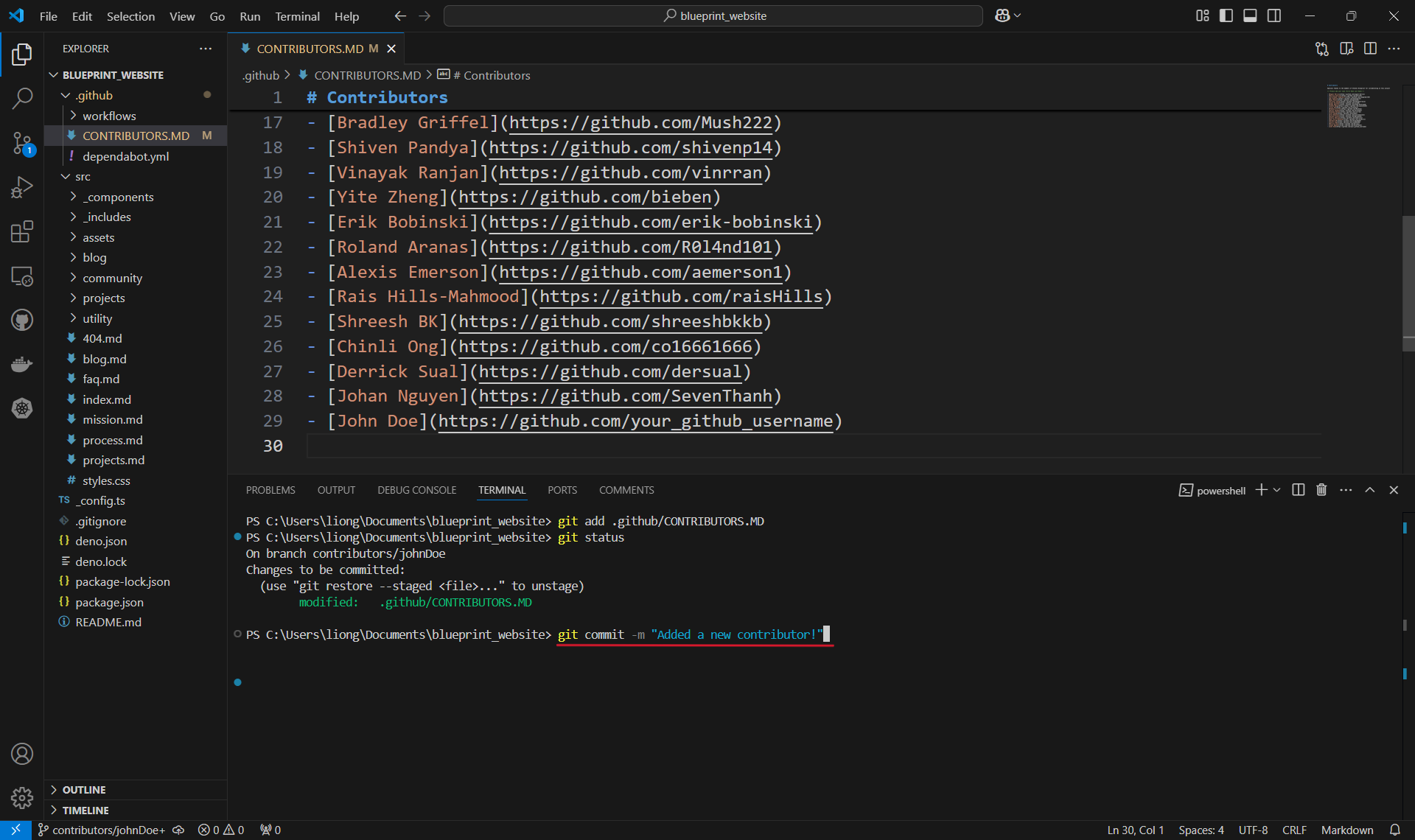
-
Pushing the commit.
- In order for our changes to appear on the remote repository (the one on Github), we need to push our changes using the git push command. If we run it as is, however, we will encounter an error:
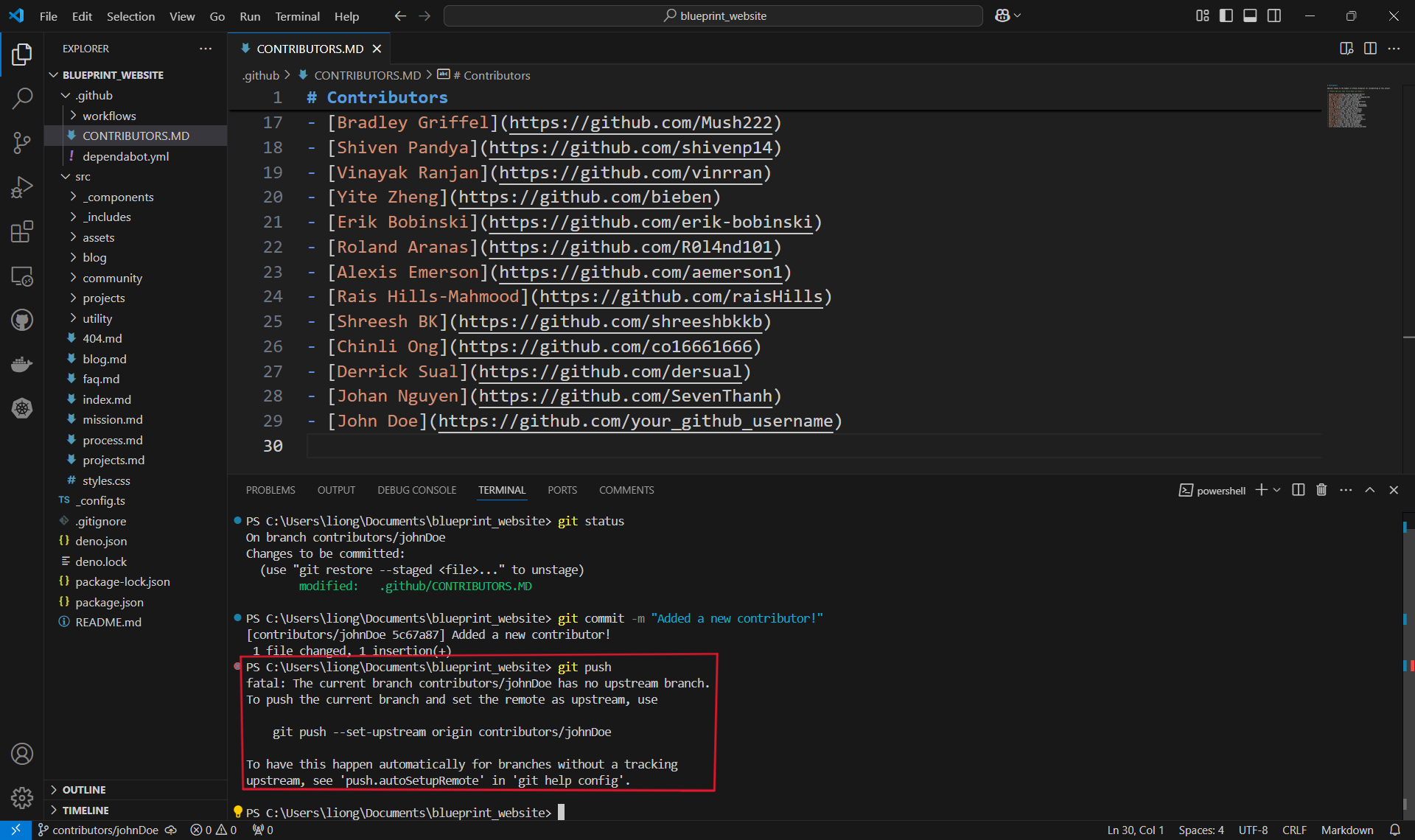
- This is because when we create the branch contributors/johnDoe, we only created it locally and it does not exist on the Github repository. Therefore, we must run the command shown.
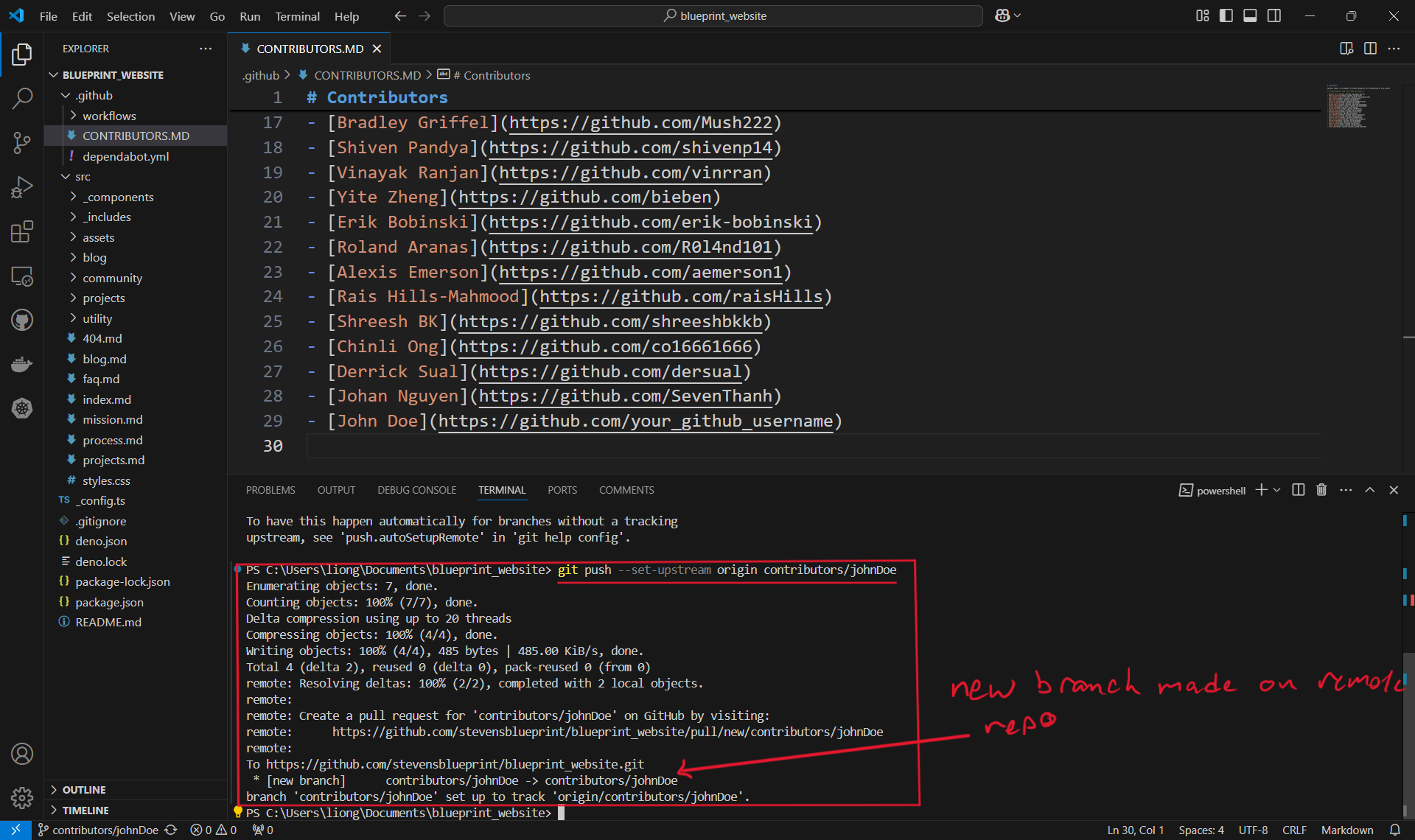
- Once the branch is set up remotely, or if the branch already existed remotely and was not created locally, we can simply use git push.
- In order for our changes to appear on the remote repository (the one on Github), we need to push our changes using the git push command. If we run it as is, however, we will encounter an error:
-
Creating a pull request.
- Once we have completed our task and pushed the changes, we can work on merging the changes back into the main code. To do this, we can create something called a pull request (PR for short) where we essentially propose the changes we made.
- Going onto Github, you will likely see a pop-up asking if you want to create a pull request for your branch. If so, press Compare & pull request.
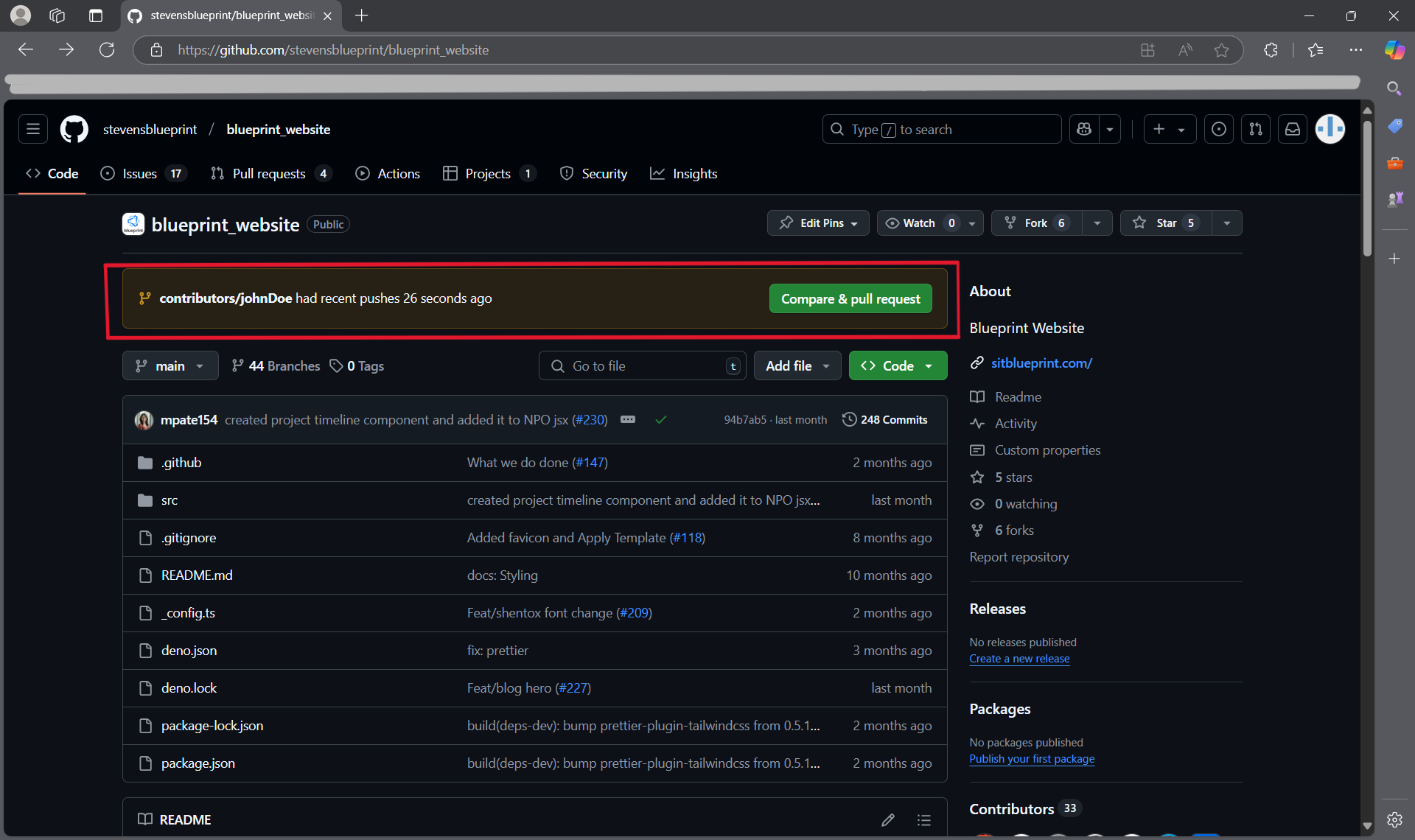
- If you don't see it, you can also create a new pull request by navigating to the "Pull requests" tab and selecting "New pull request".
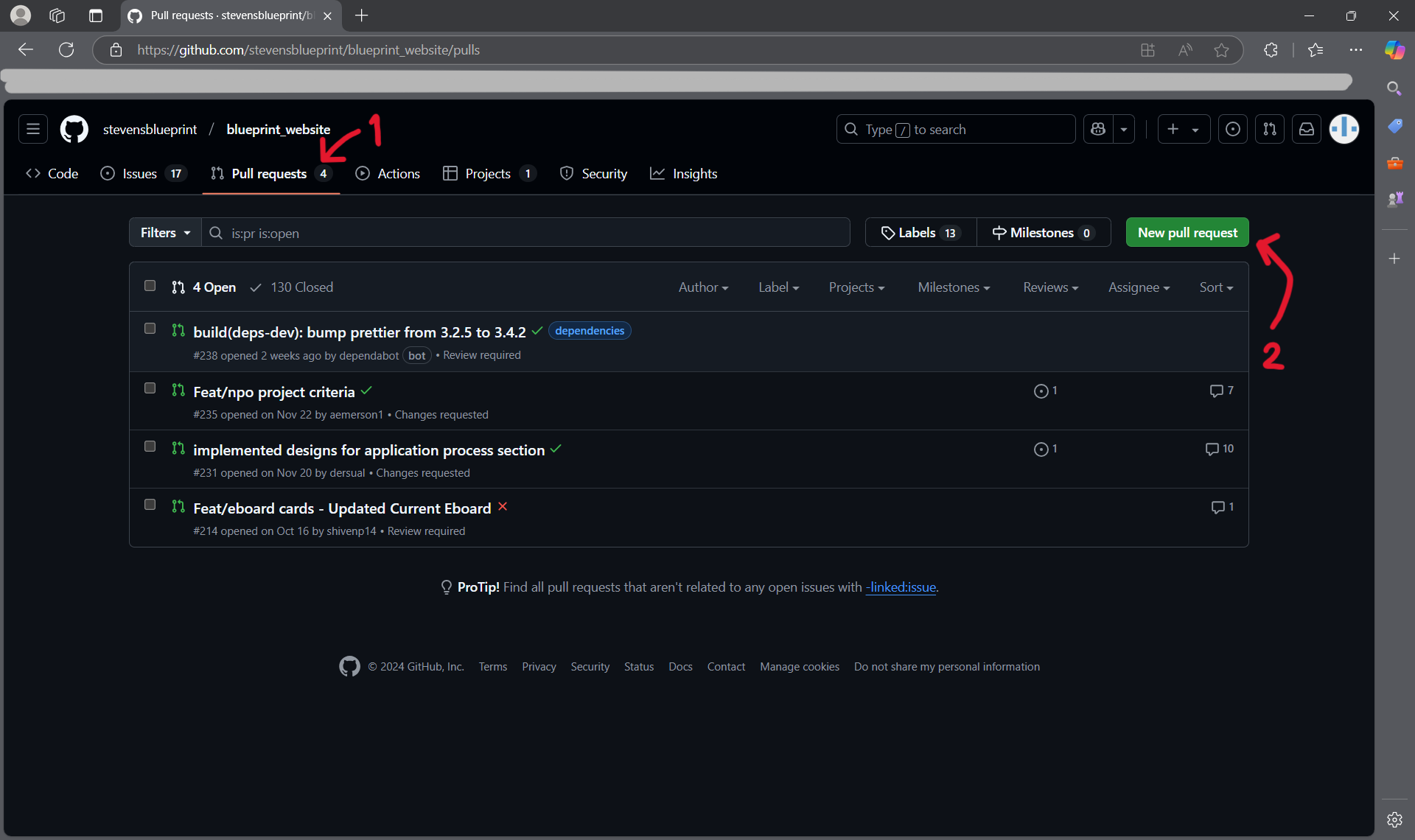
-
Approvals and Merging.
- Next, you can put in details for your pull request such as a title and detailing what changes were made on your branch.
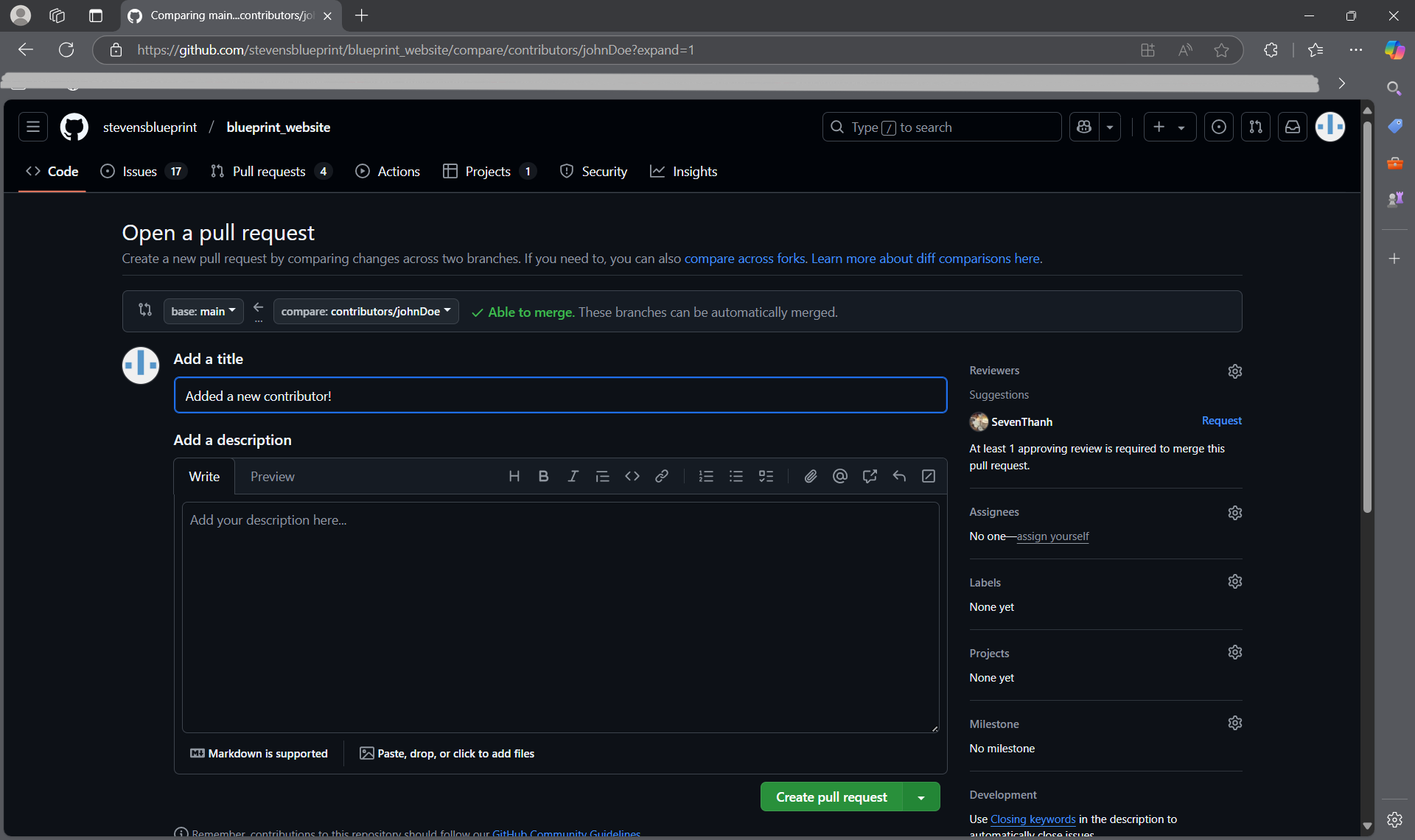
- You will also see a list of approvals, some of which are run automatically. It is also necessary for at least one person to review your pull request before you can merge it with the main branch. Once your pull request is approved, hit squash and merge. You're done!
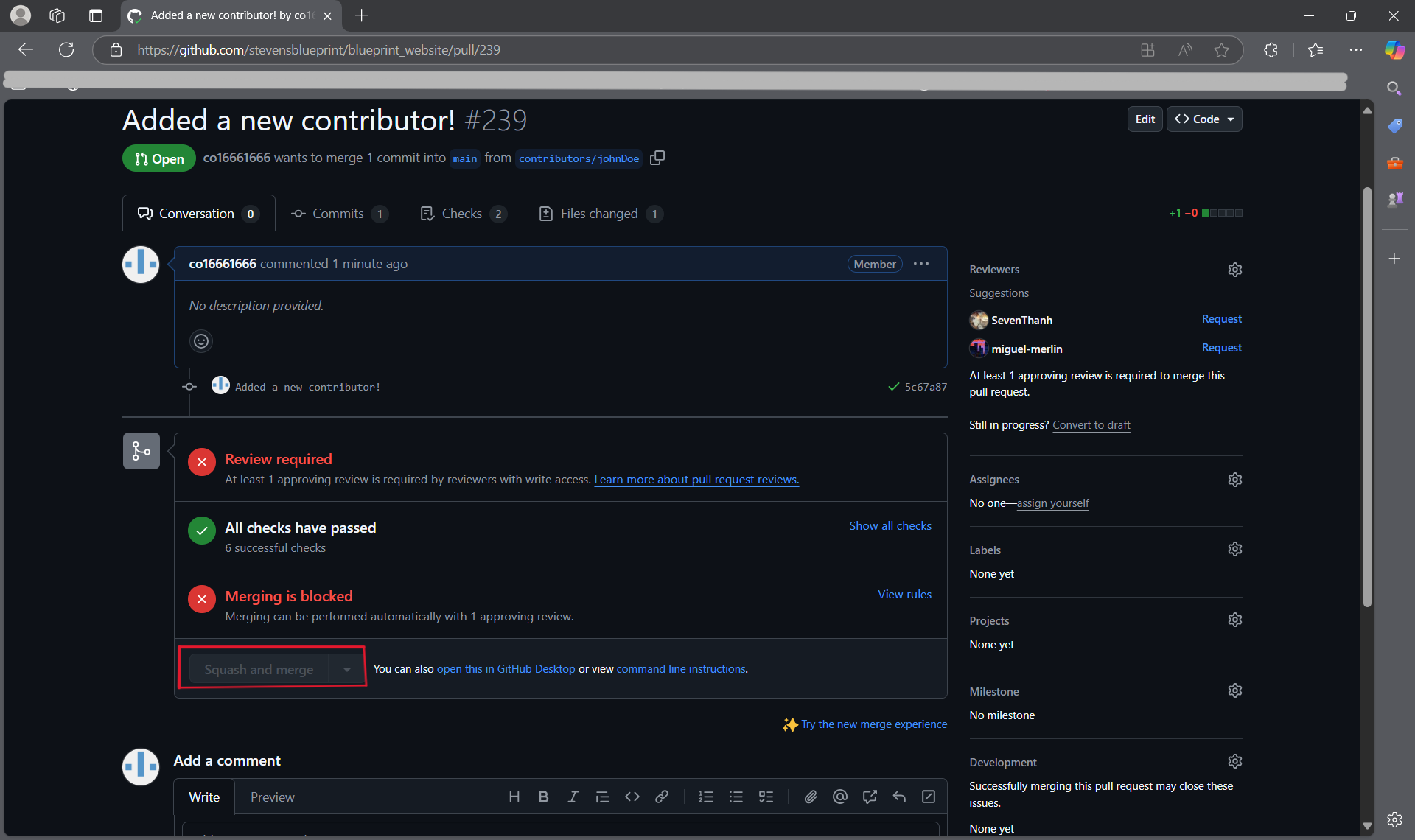
- Next, you can put in details for your pull request such as a title and detailing what changes were made on your branch.
Git/Github Quick Reference
New to Git and Github? Checkout these resources:
Overview of Git and Github: https://wiki.sitblueprint.com/books/onboarding/page/contributing-to-blueprint-gitgithub
Full comprehensive guide/walkthrough of Git and Github: GitHub Foundations - Training | Microsoft Learn
If you prefer a comprehensive book: https://git-scm.com/book/en/v2
Or comprehensive video: Git Tutorial for Beginners: Learn Git in 1 Hour
Git Clone
git clone [<repository>]
-
Creates local copy of the repository stored on Github
-
<repository>the repository you want to clone
Git Pull
git pull
-
Runs
git fetchandgit merge -
Pulls code from the remote repository (on Github) to your local repository and merges into your local repository
Git Checkout
git checkout [-b] [<branch>]
-
Used to switch branches
-
<branch>to specify which branch you want to switch to-
Switches branch to
feat/carousel -
E.g.,
git checkout feat/carousel
-
-
[-b]to create a new branch-
feat/used for feature branches (e.g., feat/carousel) -
bug/used for bugs (e.g., bug/navbar-text-resizing) -
Naming conventions:
-
E.g.,
git checkout -b feat/carousel -
Creates a new branch called
feat/carouseland switches to that branch
-
Git Add
git add [<path>]
-
Used to ‘stage’ or add contents of file to next commit
-
<path>path of the file to be added-
E.g.,
git add myFile.txt -
Adds all changes made to myFile to the next commit
-
Git Commit
git commit [-m <message>]
-
Used to create a commit
-
-m <message>message to be included with commit-
E.g.,
git commit -m “changes made to formatting” -
Creates a commit with staged changed with the message “changes made to formatting”
-
Git Push
git push
-
Used to push committed changes to remote repository on GitHub


